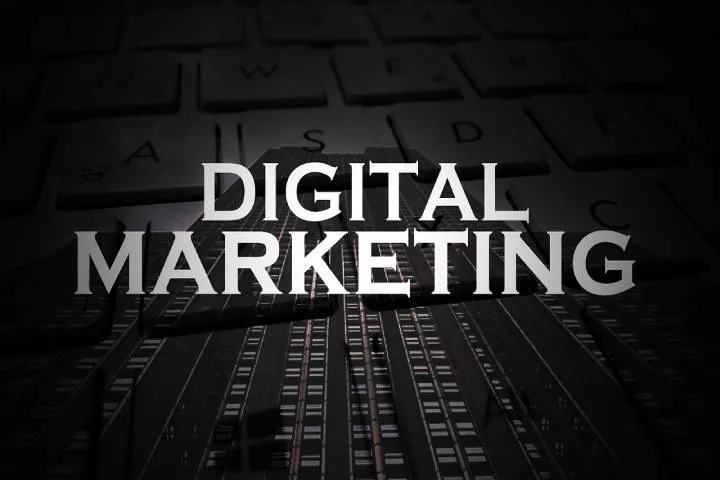Artificial Intelligence (AI)
How Augmented Reality Will Change The Future Of Design Industry
How Augmented Reality Will Change The Future Of Design Industry. Augmented Reality, Virtual Reality, Mixed Reality and AI Will Change The Future.

Living in a world where everybody is connected to everybody else is transforming our ways and standards of living. Artificial intelligence is the reason for this change and is making a mark in every industry and discipline. The brilliant minds behind evolution have set their goals to continue to revolutionize our lives and systematize our learning and developing processes.

Augmented reality is one of the parts of AI, which is making the people of this world have the best of their experiences. Like every other AI technology, augmented reality is continuously evolving and has set its claws in almost every industry. From navigating to designing, it has changed the face of every industry.
Think about it; in the past, it was challenging for a businessperson to put forward an idea in front of an audience because there was no proof that the concept was going to work. They depended solely on blueprints and theories to convince the people.
Today, with AR, a business person can easily show the working process in detail and visually demonstrate the plan. For example, last year Pepsi installed AR technology in the London bus shelter, making it appear as if the things that were not there were coming to invade the earth, making it a fun experience for the people.
It was solely meant for marketing the brand, but it made them use something innovative for the cause, entertaining people with AI.
Sometimes people mix AR with VR which are entirely different from each other. So let’s talk about what AR actually means.
Also Read: Internet of Things (IoT) and It’s Security Provocations You Must Know!
1. Augmented reality
Everybody must be aware of the game “Pokémon Go,” which uses AR as the technology which makes Pokémon appear on the mobile screens of the player. In more simple words, AR is a technology using computer-generated images that makes the viewer experience things that are not there. AR doesn’t change the whole view; it just tweaks the environment to link the virtual models and reality.
AR has taken over many fields like education, construction, and more. For example, an entrepreneur can take advantage of making logos via a free online logo generator tool, enabling them to design in a real-life environment.
2. What can be expected from AR in the design industry?
Augmented reality and the design industry go hand in hand. With the collaboration of AI, designers have been able to provide clients with a much better user interface and creative designs and videos for various purposes.
Augmented reality has broken a lot of conventions and is profoundly changing the design industry. With the developing technology of AR, it is necessary for augmented reality designers to grasp the concepts of user experience and other supplementary skills that could complement their design background.
It is high time for a designer to stretch their imagination and step in the designing world. On a basic level, designers have a lot of options and opportunities to play with. Unlike working on a flat screen, augmented reality designers have the chance to work with 360 degrees along with depth.

If, for example, you are using a hands-free 3D viewer, you can alter the interface and fill the space around the users with objects and information. Over time, this has the capability to change the ways in which designers control functionality and ease its use, making the app more manageable.
Speaking on the basis of technological progression and the seamless use of hands-free 3D devices, the possibilities of augmented reality and design grows even bigger and better. It has enabled the users to enter mixed reality territory. Mixed reality allows the users to experience the objects as appear more real as they’re anchored to the world around us.
AR is not just limited to the design industry. As said above, it has integrated its way into other sectors as well, including marketing, medicine, education, architecture, and others.
For example, architects now use AR to display the new house model to the buyer, mesmerizing them with the design and marketing their construction before it is even constructed. Similarly, young students can understand history, geography, or science better than what was just explained in a logical way. They can see what happened in the past and what will happen in the future.

3. Conclusion
Augmented reality is not something new, but that doesn’t make it any less revolutionary. As more apps develop and people adopt and design augmented and alternate reality solutions, the future of industries and user experience is guaranteed to change. We have been associated with augmented reality in our daily life, and it has changed our perspective and understanding of things.
The design industry, on the other hand, is on the brink of being evolved by developing technology and augmented reality. It is not a lie to say that AR and AI are going to put an end to the tedious work tasks of a designer and make it more fun and entertaining experience that initiates creativity.
Helpful Resources:
1. How Can I improve My Website Design Skills?
2. Advertising Products And Services On Instagram Increases Social Media Traffic
3. Want To Increase More Instagram Followers? Here’re Surefire And Successful Organic Strategies
AI Tools
A Guide To Using AI for Knowledge Management
Using AI for knowledge management and to transform massive data pools into actionable insights is not just beneficial; it’s becoming a necessity to stay competitive.

In the digital era, the fusion of AI technology with knowledge management is revolutionizing the way organizations manage and exploit their informational assets. Using AI for knowledge management and to transform massive data pools into actionable insights is not just beneficial; it’s becoming a necessity to stay competitive. Keep reading to unlock the full potential of AI-driven knowledge management.
1. The Intersection of AI and Knowledge Management: A Synergy Explained
Knowledge management traditionally involves capturing, organizing, and distributing knowledge across an organization. When AI steps into this territory, the potential for enhanced efficiency and decision-making emerges. AI algorithms can sort through and analyze data at a rate no human can match, revealing patterns and insights that can be critical for strategic planning. This melding of AI with knowledge management practices is a modern alchemy, creating an invaluable resource.
One of the most significant benefits of integrating AI into knowledge management is the automation of data processing. AI systems can continuously learn from new data, refining their algorithms and providing even richer insights over time. Moving from static data repositories to dynamic knowledge hubs, businesses are now armed with constantly evolving intelligence. This represents a profound shift from data being a static historical record to a dynamic, predictive tool for decision-making.

Customization is another strong suit of AI in this space. Rather than one-size-fits-all information resources, AI can personalize knowledge dissemination to the needs of each employee. The focus moves beyond mere information access to ensuring the right knowledge reaches the right person at the right time.
2. Implementing AI in Your Knowledge Management Strategy
Transitioning to an AI-driven knowledge management system begins with identifying the scope and objectives of knowledge needed. Organizations must be clear about the kind of knowledge that is most valuable and how AI can aid in its cultivation and dissemination.
Following initial evaluations, the selection of appropriate AI tools and technologies becomes the next crucial step. There are various AI solutions designed for specific knowledge management tasks, from natural language processing for content analysis to machine learning models that predict trends and behaviors.
Integrating AI requires a cultural shift within the organization. Employee buy-in is crucial, and it is important to address any concerns about job displacement head-on. Training and educating the workforce on the benefits and use of AI systems can facilitate smoother adoption, ensuring everyone understands the role of AI as a partner, not a replacement, in the knowledge ecosystem.
3. The Impact of AI on Knowledge Retention and Dissemination

The true value of AI in knowledge management is often most visible when assessing knowledge retention and dissemination within the organization. AI-driven systems can significantly enhance the ability to capture institutional knowledge, store it and make it available in engaging, interactive formats that increase retention.
Analytics are also central to measuring the impact of AI on knowledge management. By evaluating these metrics, businesses can see whether the knowledge is being leveraged effectively, which areas may need more focus, and where improvements can be made.
Furthermore, AI can be a boon for training and development programs. By adapting to the learning pace and style of individual employees, AI can deliver personalized training recommendations and content, leading to more effective learning outcomes.
Altogether, AI is transforming the realm of knowledge management with its capacity to automate, personalize, and revolutionize how information is processed and utilized. Challenges notwithstanding, the rewards of integrating AI into knowledge management strategies are profound, paving the way for smarter.

 Instagram3 years ago
Instagram3 years agoBuy IG likes and buy organic Instagram followers: where to buy them and how?

 Instagram3 years ago
Instagram3 years ago100% Genuine Instagram Followers & Likes with Guaranteed Tool

 Business5 years ago
Business5 years ago7 Must Have Digital Marketing Tools For Your Small Businesses

 Instagram4 years ago
Instagram4 years agoInstagram Followers And Likes – Online Social Media Platform





















